463 Search Results for autism
June 17, 2012
by Carole Zangari -
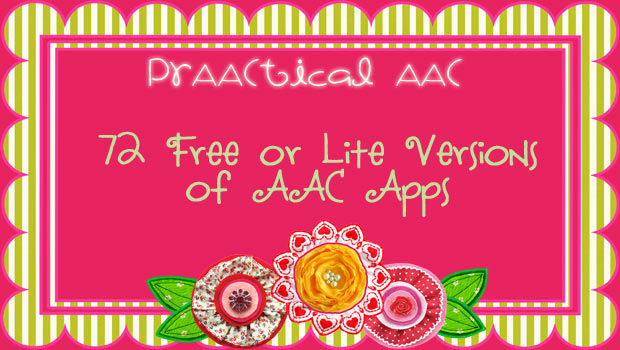
There is a more recent version of this post and app list. Click HERE for the updated version. — Here is our most recent update of free and lite versions of AAC apps, including a dozen for the Android platform. As with the previous version, we’re including some additional resources and excerpts from previous posts related to AAC app selection. We’d also like to give a mention to the first draft of RELAAACs, our attempt to quantify some of what we look for when we try to compare AAC apps based on their language and communication features. —————————————————————————————————– Thanks to all who’ve given us great feedback and suggestions on our list of free and lite AAC apps. If you’ve been following our blog, you know that we have mixed feelings about the AAC app revolution. More specifically, we’ve had concerns about the decision-making process around app selection, and have advocated for that... [Read More...]
June 16, 2012
by Carole Zangari -
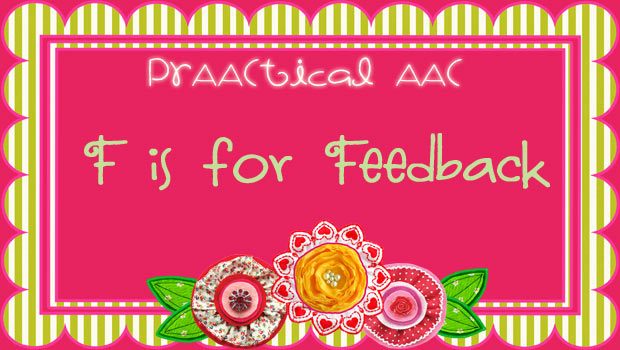
This month we’ve been talking about ways to use traditional language facilitation strategies with people who use AAC. So far, we’ve covered expansion and extensions and recasts. This week we talk about feedback. Feedback is a critical component of any learning experience. It functions as a signpost and let’s us know where we are relative to our destination. Let’s think about how we can use it to improve the language of people who use AAC. – Contingent Responses What we do and say after the AAC learner communicates can be a powerful way to impact patterns of language use. The cardinal rule in AAC intervention is to provide consequences that are contingent on what was communicated. So, if the beginning AAC learner requested a something they don’t really like by mistake, we’d still provide that item and have them interact with it briefly before giving them a chance to make a different choice.... [Read More...]
June 15, 2012
by Robin Parker -
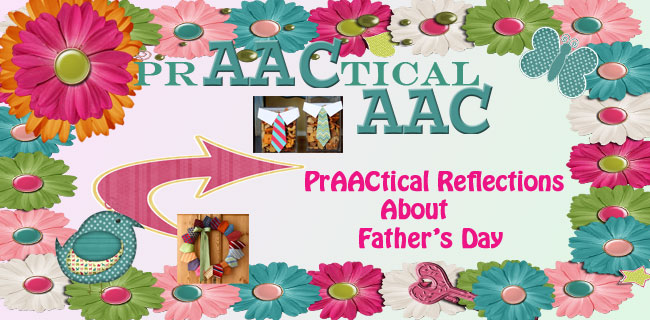
We have so much fun preparing for Father’s Day. We make it a celebration weekend with lots of homemade gifts, family activities, and reflections on past memories and future plans. We really love all of our children’s home-made crafts, especially those that include photos . We also think hearing a child say “I love You” is another great gift. And finally with enough time left to prepare, we think a heartfelt letter, essay, or poem directed to ‘dad’ would be amazing. Here is some eloquent inspiration. One Father’s Perspective by Robert Rummel-Hudson, author of Schuyler’s Monster: A Father’s Journey with His Wordless Daughter Fathers Day with Autism: Rethinking the Cool Dad by Joel Yanofsky author of Bad Animals: A Father’s Accidental Education in Autism. Love That Max by Ellen Seidman, author of Love That Max Happy Father’s Day to A Special Needs Dad by guest blogger Karen Wang, Friendship Circle Parent Father’s Day interview with... [Read More...]
June 8, 2012
by Robin Parker -
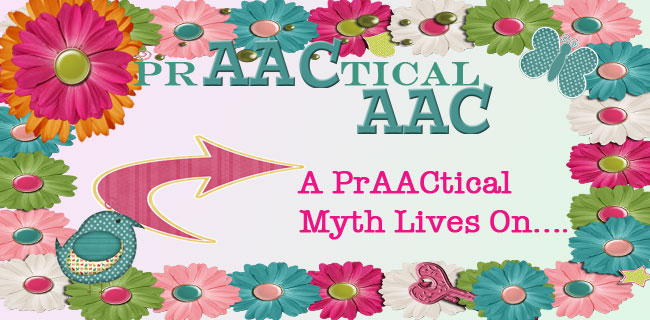
A myth about visual schedules continues to rear its ugly head in a prAACtical situation. Another family was instructed to discontinue a visual schedule because “the schedule will become a crutch, the schedule will result in dependence, and the schedule can not be used forever or all over town”. I need to start with an apology for not following up after my earlier post when I first realized that the visual schedule myth lived on. Maybe my punishment was hearing the same myth repeated (though it doesn’t seem fair that a student was impacted in the process). But maybe it was a teaching opportunity for me. It certainly made me respond quickly. So now for the down and dirty summary of my conversation with the other ‘professional’ . Having the conversation was my attempt at helping my student receive the visual language supports that she needed. I have to admit, it... [Read More...]
June 5, 2012
by Robin Parker -
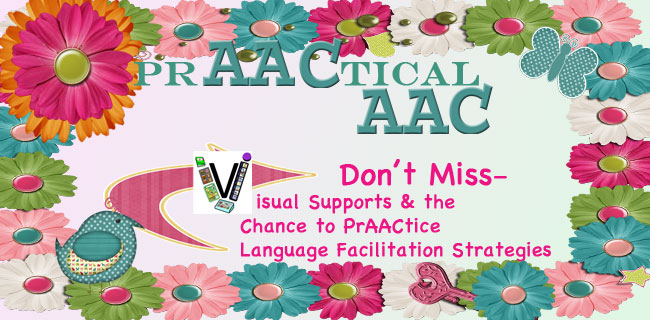
We have to commend and thank a classroom teacher who made it her priority to learn and share information about visual supports and communication. She developed a great wiki with many awesome visual support downloads. She worked with a mentor through the Florida Partnership for Effective Programs for Students with Autism (PEPSA). The mission of this great program is to enhance the education for students with autism spectrum disorders. With projects like this, the education of everyone is enhanced. The visual supports are for PrAACtical activities and learning. Find your favorite and then apply language facilitation strategies when teaching communication with the symbols. Check this out at: http://pkautismvisuals.wikispaces.com/Welcome Academic Supports Basic Communication Daily Routines Fun and Games
June 1, 2012
by Robin Parker -
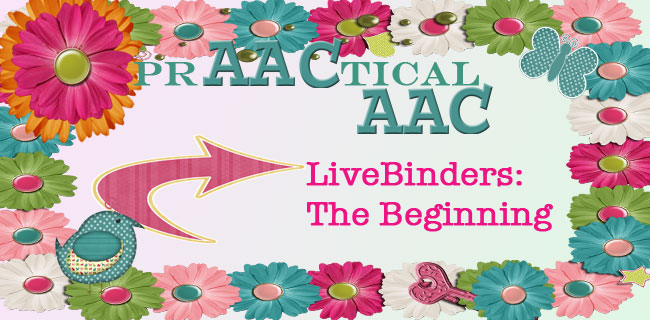
We have always started our collaborative projects with a retreat (usually a day at the beach or park). The retreat usually ends with a project and a plan to meet again. Following the retreat that inspired PrAACtical AAC, we were spending hours upon hours on the computer searching We were using pen and paper to write down urls to sites we wanted to share. We couldn’t believe the great information that was available. So when Carole told me to sit down and said “you have to look at what I found, it’s called LiveBinders“. I can still remember the exact moment. It was like on T.V….. the sun started shining through the window of my living room and music started playing. We couldn’t believe there was a site that was easy to use, would organize all the work we had done, let us look at and use other binders,... [Read More...]
May 30, 2012
by Carole Zangari -
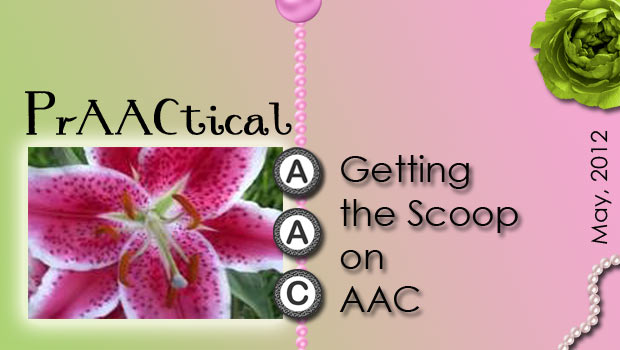
When I first heard about curation being the next big thing on the internet, I had a hard time seeing how I would have time to get involved. Less than a year later, I can’t conceive of being on the internet without my curation tools. Every day, something comes up that I want to store on a curation site. And it’s almost every day that I send someone to those places for a specific tool, video, article, etc. – In addition to Pinterest, which we blogged about earlier, we are frequent users of Scoop.It and LiveBinders. Each one has its unique properties and so, they are each useful for different things. – Scoop.It is a pictorial magazine where you can collect and share websites related to topics of interest. Unlike Pinterest, with Scoop.It, you can add things that do not have a sizable image. Anyone can view Scoop.Its, but if... [Read More...]
May 24, 2012
by Robin Parker -
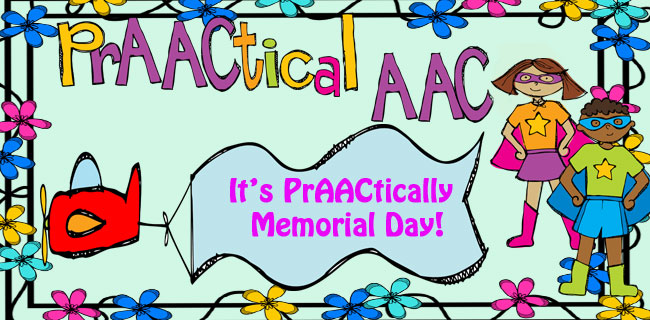
Memorial Day Weekend is big for us. We remember, appreciate, and honor the people who have protected our freedoms. We both have annual relaxing weekends planned. As we started to get ready, though, we started looking for Memorial Day AAC materials. It was surprising to see that there was not much to be found. We found some gluten-casein free Memorial Day recipes, which are great, but what about symbols to go with the recipes or symbols to explain the holiday and what about AAC language activities for the typical long weekend or trip? Not much…. So as we began preparing for our own weekends, these are some of the things we have done or are doing for PrAACtical AAC at home and on our mini-vacations: – Before We Leave Create a personal participation story (modified social story) so ALL the children can SEE the language for the trip. Here’s something that... [Read More...]
May 23, 2012
by Carole Zangari -
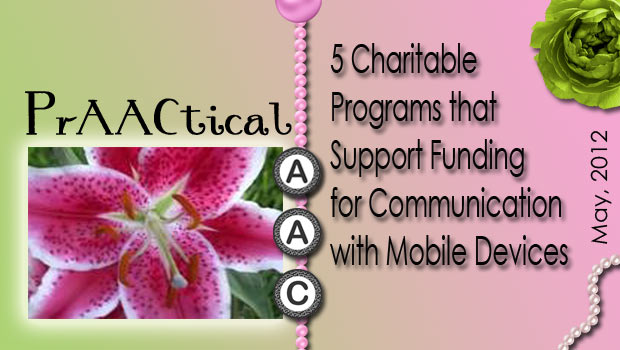
– For some people with significant communication difficulties, mobile devices and AAC apps play an important role. When selected after a process of careful evaluation, they can be incredibly useful in building communication, literacy, self-regulation, and other important skills. Here are links to organizations that provide support to families seeking mobile devices and communication apps for their children. – 1. The iTaalk Autism Foundation 2. Babies with iPads 3. Apps for Children with Special Needs 4. Different Needz Foundation 5. Gift a Voice Program from Different Iz Good™: iPhones only –
May 19, 2012
by Carole Zangari -
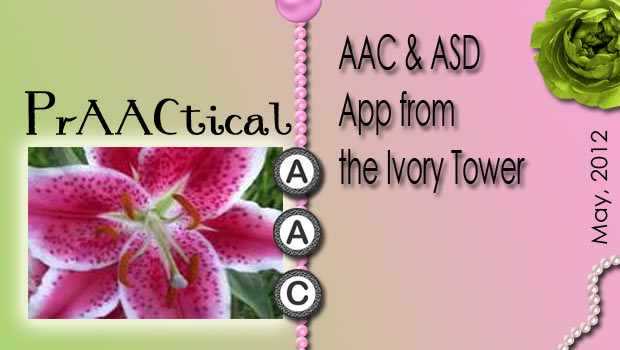
Today we pass the reins to Dr. Oliver Wendt from my alma mater, Purdue University. Purdue’s AAC program has made a great many contributions to the field and the tradition continues with the development of SpeakAll, an AAC app modelled after the PECS strategy. In this post, Dr. Wendt explains how a service-oriented project came to benefit so many individuals with significant communication difficulties. — – SpeakAll! An iPad App Addressing Particular Needs of Learners with Autism – An interdisciplinary team of Purdue University students from engineering, special education, and speech-language pathology has developed a simple and “lite” iPad app that takes into account the particular learning characteristics of beginning communicators with autism. This particular Purdue program is titled “Engineering Projects in Community Service” (EPICS). – The free app is called SpeakAll! and is available for download at the iTunes store here. SpeakAll! has been modeled after the Picture Exchange... [Read More...]









